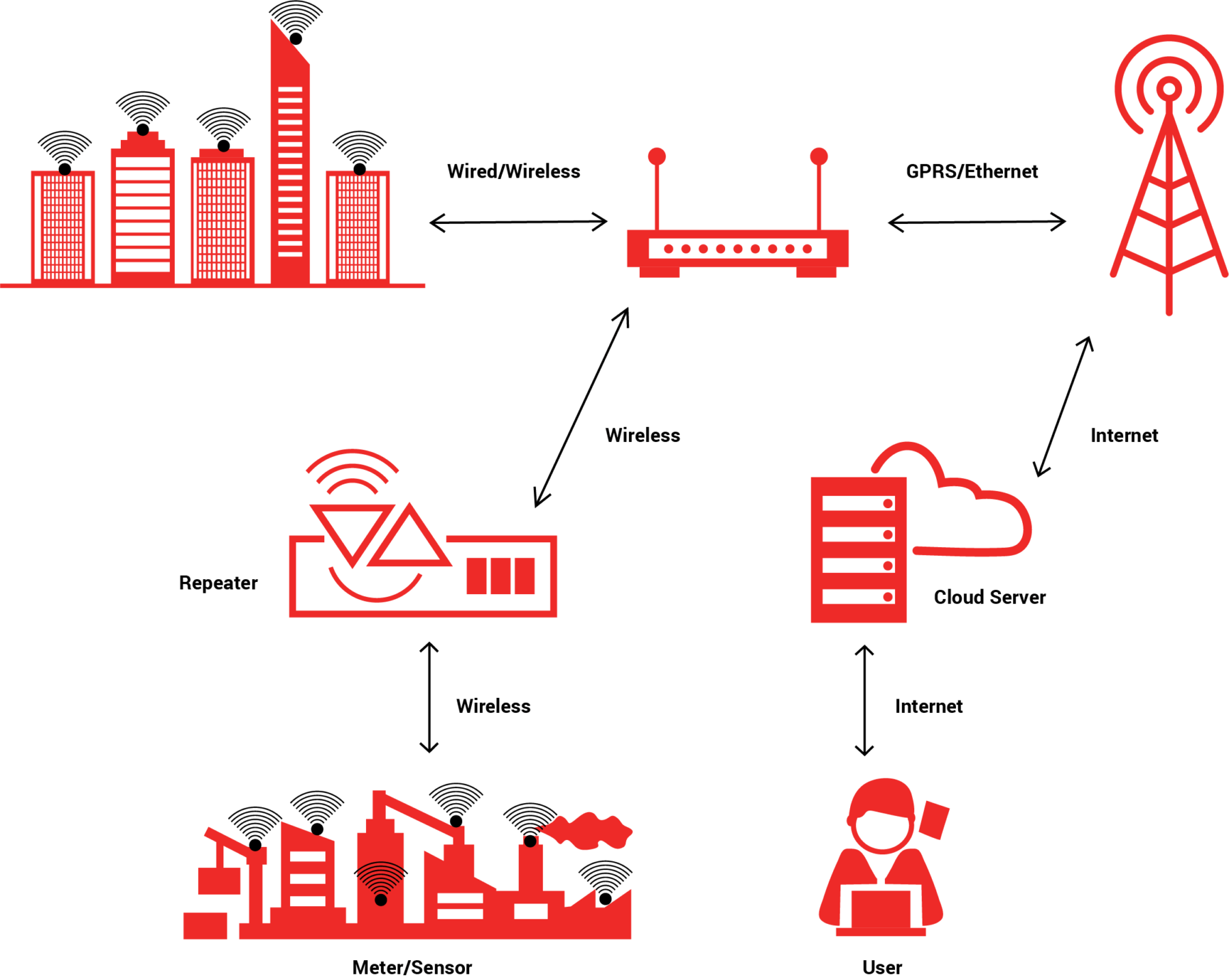IoT based remote pipeline monitoring systems deliver improvements in the safety, reliability, and performance of assets and equipment in oil and gas industry. They use real-time data from production assets to reduce unplanned downtime and increase asset reliability.
Remote monitoring systems have many applications in oil and gas industries that require a lot of equipment that operates from remote locations. You can monitor and collect data to know exactly where your assets and equipment are, how they are performing, and identify problems as they occur. You can also get real-time notifications on any critical events without the need to dispatch field personnel.
Remote Monitoring Architecture

Pipeline leaks can have huge consequences including safety risks, environmental risks, damage to property and reputation, besides the financial costs of paying regulatory fines and clean-ups. Operators must have pipeline leak detection systems that they can rely on so that they can detect leaks quickly, locate these leaks accurately, receive real-time alerts, and work effectively under difficult operating conditions.
Advantages of IoT Based Pipeline Leak Detectors
- Detect pipeline leaks quickly and minimize their impact by reducing product loss
- Get valuable information about leak size, location, and amount of product lost when a leak occurs
- Monitor your entire oil and gas pipeline network with accurate information and quickly detect leaks to prevent any potential disasters
- Prevent damage to people, property, environment as well as your reputation
- Track pipeline corrosion and ruptures due to abrasive materials
Benefits of IoT Pipeline Monitoring in Oil and Gas Industry
1. Increase Productivity
According to Aberdeen Research, 82% of companies have experienced unplanned downtime over the past three years and this can cost a company as much as $260,000 an hour. Besides affecting your potential profit margin, it can also have adverse effects on delivery schedules and agreements with clients. With IoT remote pipeline monitoring, you can ensure that all your assets and equipment are working as expected, maximizing your productivity.
2. Lower Maintenance Costs
Gartner estimates that through 2022, decision automation in the form of predictive maintenance will generate the highest business value for organizations with heavy assets. Faulty machinery in oil and gas industries can lead to a ripple effect where other equipment in the ecosystem also malfunctions, causing further damages. These defects are virtually impossible to trace without the use of predictive maintenance techniques, making IoT pipeline monitoring system a useful investment for asset-intensive companies.
3. Increase Asset Lifespan
Remote pipeline monitoring enables you to monitor, maintain, and optimize assets for better availability, utilization, and performance. You can gain better visibility into assets via real-time monitoring, allowing you to predict machine failure and identify parts that need replacement. You can schedule maintenance and repairs, predict events before they occur, and get real-time notifications that enable you to take quick action, thereby extending the life of your assets.
4. Improve Safety and Compliance
Remote pipeline monitoring systems enable oil and gas companies to anticipate possible safety risks before they occur, allowing you to quickly take the necessary action to mitigate these risks. By monitoring and analyzing data over long periods of time, you can identify potentially hazardous conditions and estimate their impact on working conditions and the environment. By integrating remote monitoring systems with other business applications, you could then trigger instructions to take corrective measures and keep exposure levels below the threshold values, in compliance with regulations.
5. Gain Manufacturing Visibility
Remote Monitoring systems receive and process data from the factory floor to generate current views of factory operations and production line output. From a global overview down to the health of specific machines, up to date production status is readily available to production managers, machine operators, and floor supervisors. Create an accurate visual representation of your production environment, viewing your production operations at a global scale, and providing visibility into production status for specific products or production lines.
6. Optimize Production Processes
Gathering shop floor data is pointless if customers can’t use it to drive efficiencies or optimize production processes. IoT based Remote Pipeline Monitoring systems analyze streaming data from the production floor to detect anomalies across machines, assembly lines, and factories. Floor managers can view live data and view comparisons across machines and locations to quickly identify factories, lines, machines, and products that are under-performing and determine anomalies in their operations.
7. Improve Service Crew Productivity
Using sensor data collected directly from the oil and gas production equipment, factory managers can quickly identify the reasons for machine under-performance or machine failures that are impacting production throughput. Detailed machine performance data enables factory floor workers to observe machine operation remotely and arrive on the scene properly equipped to repair the affected machines. Depending on equipment capabilities, operators may be able to remotely reset equipment, avoiding the need for time-consuming site visits.

